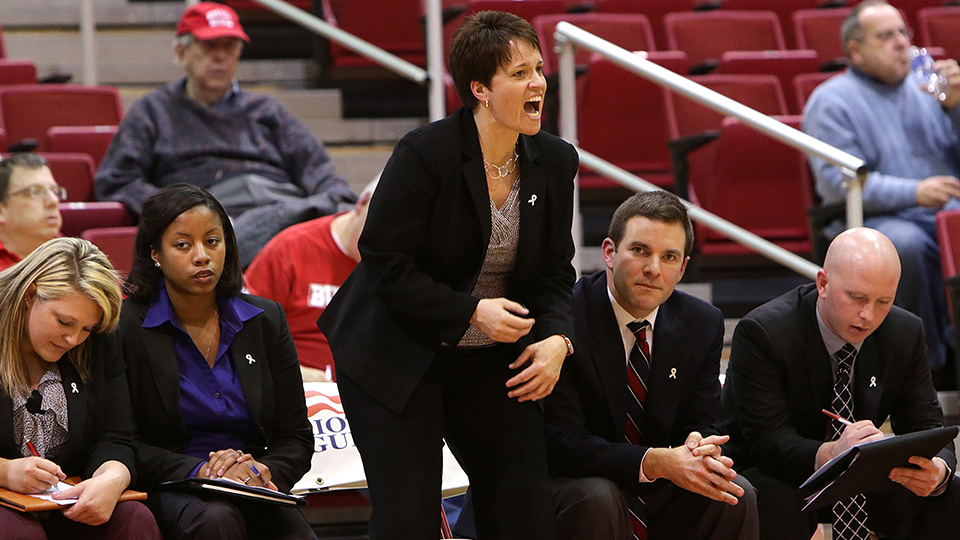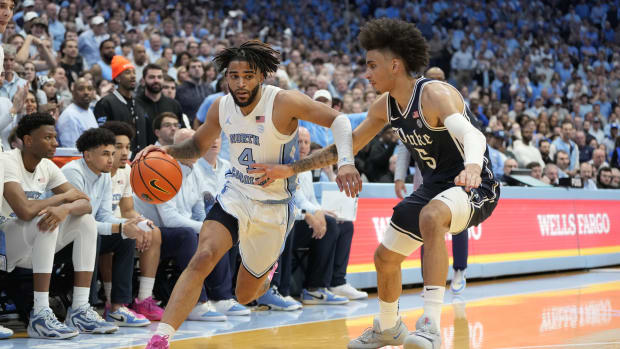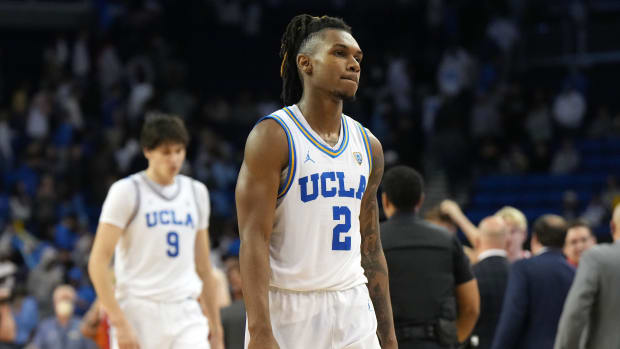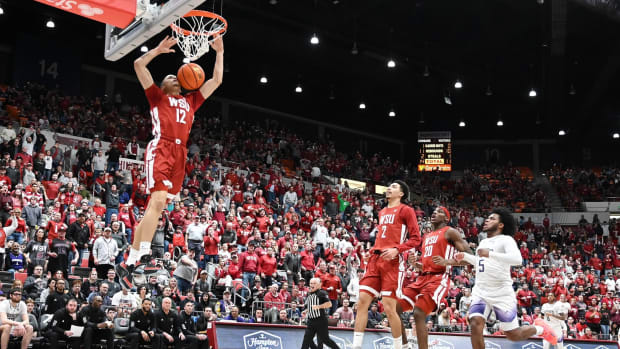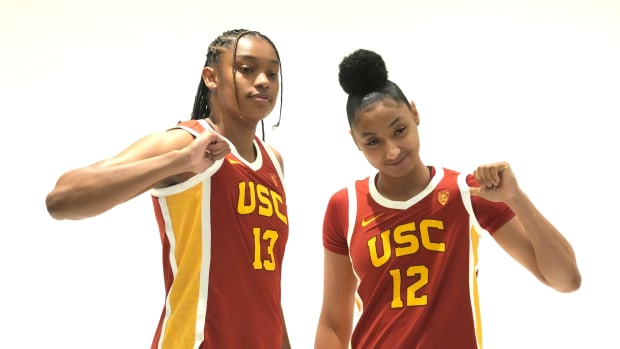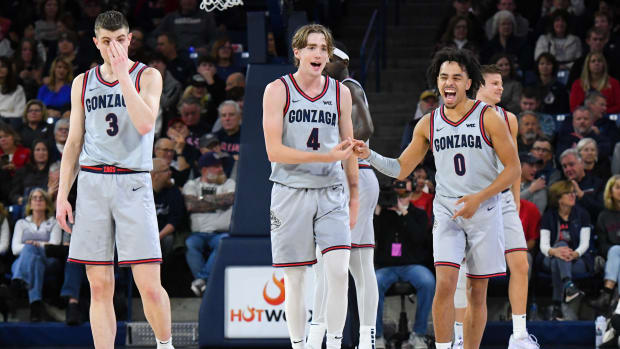Why does women's basketball have so many coaching abuse problems?
Reporter Lauren Shute and I spent the last several months looking into the recent epidemic of complaints from college athletes about abusive coaching. Our special report, “Abuse of Power,” which takes up six pages in this week’s SI, is pegged to the highest-profile recent episode of alleged abuse—claims by Illinois lineman Simon Cvijanovic that helped lead to coach Tim Beckman losing his job. Our research also implicated sports from men’s basketball to field hockey, volleyball to softball, and swimming to track.
But as we did our reporting, Lauren and I both noticed a widespread problem in one sport in particular: women’s basketball.
We counted at least seven instances in the past 28 months where a Division I school investigated, suspended or parted ways with a women’s basketball coach following player complaints of mistreatment.
And Lauren, who played basketball Division I basketball between 2010 and ’13, was struck particularly by a figure in the NCAA’s 2010 GOALS Report. That survey of almost 20,000 college athletes reported that only 39% of women’s basketball players “strongly agreed” that “my head coach can be trusted.”
Is the era of abusive college coaches finally coming to an end?
Sure enough, just steps from Memorial Stadium, the Illini women’s hoops program is going through trials of its own. Seven former players have filed a $10 million federal lawsuit that charges head coach Matt Bollant and former associate head coach Mike Divilbiss with verbal abuse and racially motivated decision making. Two investigations—one by the school, another by an outside law firm—have cleared both coaches of everything except occasionally being “too negative” in their approach. But that civil suit still hangs over the program, and the seven plaintiffs refused to speak to outside investigators.
Which raises the question: What about the women’s game makes for so much turmoil and dysfunction?
One clue sits in my notebook. In speaking with Bollant for this week’s report, I asked him about the implications of an NCAA rule that permits women’s sports to carry more players than their male counterparts. Larger squad sizes are a way to offset the huge numbers of male athletes required for football and helps balance the Title IX books. Is there a point at which a coach might take on more players than he or she can manage—or, to put it from the player’s perspective, at which a young woman eager for a sense of belonging will feel marginalized?
“That’s a very fair thing to look at,” said Bollant, who coached at Wisconsin-Green Bay before landing in Champaign. “At Green Bay we redshirted players, but they weren’t that highly recruited. At a mid-major, it’s easier to carry 15 on your roster and keep them happy.”
Bollant said that, while interviewing for the Wisconsin job, Badgers athletic director Barry Alvarez asked him if he’d be willing to carry as many as 17 players. The request alarmed him enough that it contributed to his losing interest in the opening.
• MORE: How a tragic fight between HS stars changed lives forever
But end-of-the-benchers deserve better than to be tagged with the casually dehumanizing terms that coaches used for on-the-outs Illini, who wound up doing “dog pound” duty with extra practices, or being likened to “crabs in a bucket,” a metaphor for pulling down others who are trying to hoist themselves up.
Former Boston University coach Kelly Greenberg, who stepped down in April 2014 after player complaints dating back a decade, told me she had always regarded communication with her players as one of her professional strengths. “Unfortunately, I was never addressed with any of these problems,” she said. “They went directly to the media, so it was out of my hands, and out of my university’s hands.
“Coaching is a challenge these days. Just when you think you have a handle on it, who knows where it all turns. The next thing you know, you’re picking up the paper [and reading about everything] on a Saturday morning.”
Greenberg’s comments—her first public remarks since she and BU parted ways—sent me back to that 39% figure. Every one of those 61% of players who doesn’t fully trust her coach is a candidate to run to the press.
As for Divilbiss, he admits that he played bad cop to Bollant’s good. He also told me that he agrees that his style isn’t suited to every athlete. At the same time, when I described efforts by the Positive Coaching Alliance to introduce a new paradigm based more on encouragement than criticism, he balked. To him, it sounded like the “everybody gets a trophy” mentality.
As a society, Divilbiss said, we recently went through a period when “we thought we could teach kids self-esteem.” He says that self-esteem in fact comes when a teacher sets standards, students master skills to meet them, and the teacher raises the bar with a new standard. In the process, all sorts of failure will take place—and Divilbiss doesn’t believe in pretending that failure is anything but. “What if the measure of success is failure?” he said. “That’s how kids learn, through failure.”
But high standards and diligent practice as one tactic, and a positive approach as its companion, needn’t be mutually exclusive. You can raise that bar—and teach and drill, and raise the bar again—with an upbeat attitude.
Larry Brown lucky to keep job after NCAA comes down hard on SMU
Which leads to another finding that guided our reporting: the high rates of anxiety and depression among today’s college students, athlete and non-athlete alike. Given the perilous mental health of so many of the young adults who play for them, coaches who fail to adopt new-school methods risk exacerbating an already alarming status quo. There already seems to be a huge gap between what many women expect when they go off to play college basketball, and what they find. Forget that there should be a healthy balance between athletics and other components of campus life; as a year-round sport with “optional-mandatory” captains’ practices, weight-room sessions and chalk talks, basketball can be all-consuming. And that raises the stakes for every relationship within a team. Former Boston player Katie Poppe, one of the former Terriers who allege that Greenberg belittled them, described it this way: “You go to college, you can’t go home, you’re always at school, and those people become your family and your mentors. For them to get you down and rip you apart, not because of basketball, just because of who you are as a person . . . it’s just so crippling.”
Those words had a special resonance for SI’s Lauren Shute. With her own Division I experience fresh in her mind, Lauren adds flesh and blood to the bones of that NCAA GOALS data in a piece you can read Friday on SI.com.
